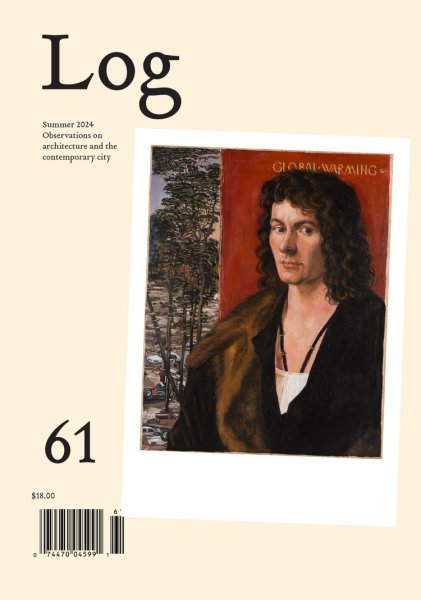Log 61 SUMMER 2024
Log 61 SUMMER 2024
販売価格: 5,060円(税込)
商品詳細
From the Norwegian seaside to the Ethiopian highlands; from the Bavarian Forest to the Taiwanese coast; from Venice to the Las Vegas Venetian, Log 61 travels in pursuit of architecture. In this open summer issue, Christopher Pierce visits cabins designed by Kastler Skjeseth Architects, and Motuma Tulu drives across southern Ethiopia to document informal architecture; Tim Altenhof rides along with architect Peter Haimerl to see his unique housing and restoration work, while Thomas Daniell wrestles with the appendages of RUR Architecture’s Kaohsiung Port Terminal; and in Venice, Lina Malfona contemplates Tadao Ando’s exhibition design for painter Zeng Fanzhi, while behind the Venetian, Cameron Wu assesses the geometric problems in Populous’s Sphere. Jimenez Lai checks out the architectural follies at Coachella, and Ben Fehrman-Lee sees the Frederick Kiesler exhibition in
New York.
Log 61 also includes the speculative travels of the mind, with Iman Ansari advocating a program of action, Kristine Chung investigating parasitic cell towers, and Andrew Witt digging into the avant-garde proposals of Doug Michels and Ant Farm. The issue is peppered with 10 short observations, which range from book and exhibition reviews to 5G infrastructure and the ever-changing streetscape, and then concludes with a trio of endings: Todd Gannon marks the end of an era with the passing of José Oubrerie, André Patrão questions what it means to speak of the “end” of architecture, and Justin Beal imagines an architecture that forestalls the “end of the world.” From these endings, new journeys begin.
New York.
Log 61 also includes the speculative travels of the mind, with Iman Ansari advocating a program of action, Kristine Chung investigating parasitic cell towers, and Andrew Witt digging into the avant-garde proposals of Doug Michels and Ant Farm. The issue is peppered with 10 short observations, which range from book and exhibition reviews to 5G infrastructure and the ever-changing streetscape, and then concludes with a trio of endings: Todd Gannon marks the end of an era with the passing of José Oubrerie, André Patrão questions what it means to speak of the “end” of architecture, and Justin Beal imagines an architecture that forestalls the “end of the world.” From these endings, new journeys begin.
